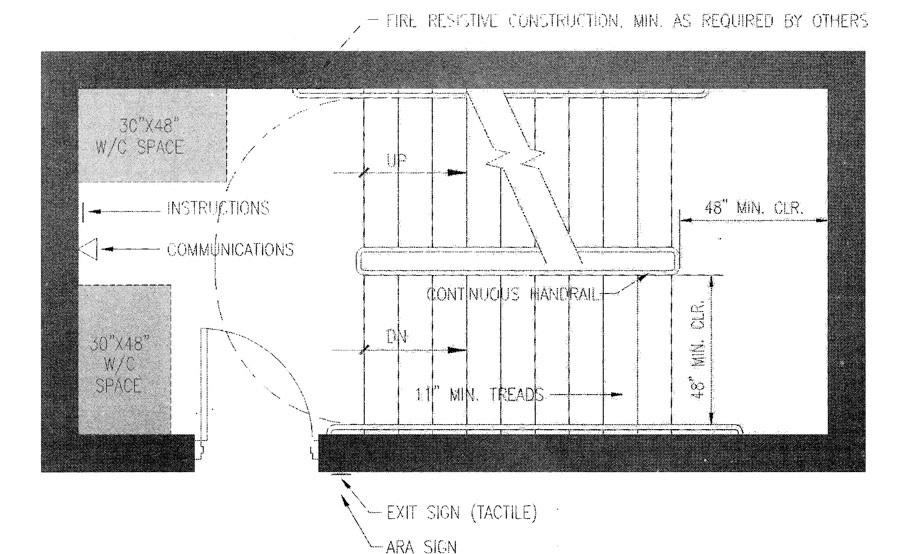Areas of Rescue Assistance [4.1.3(9), 4.3.11]
Areas of rescue assistance are fire-rated spaces where people unable to use stairs can await evacuation assistance from emergency personnel. Communication devices in these areas connected to the primary entry (or other approved location) provide indication of where this assistance is needed. Areas of rescue assistance are not required in alterations, non-occupiable spaces, open-air structures, or buildings equipped with "supervised automated sprinkler systems, “which are systems with built-in signals used to monitor system features (the opening and closing of water control valves, the power supplies of needed pumps, water tank levels, etc.) and to indicate conditions that will impair satisfactory operation. Section 4.3.11 outlines specific areas that may be designed as an area of rescue assistance, including stairway landings, exit balconies, and corridors. Because exit stairs are often required to be fire resistant by fire or life safety codes, areas of rescue assistance are often located at landings.

Wheelchair spaces must be located outside required exit widths. The minimum 48 inch width, measured between the leading edge of handrails, provides clearance for assisted evacuation. This requirement applies to stairs adjacent to areas of rescue assistance, not necessarily those required to comply with 4.9. Recommendation: While requirements in 4.9 (i.e., for treads, risers, nosings, and handrails) apply only where stairs are the only means of connection between floors, such as in buildings without elevators, compliance is still a good idea since elevators typically cannot be used in emergencies.
Other spaces, such as individual offices, can be designed and constructed according to these specifications and used as an area of rescue assistance where approved by the appropriate local authority. ADAAG also recognizes horizontal exits when constructed in accordance with local building code, as an alternative to areas of rescue assistance.

User Comments/Questions
Add Comment/Question